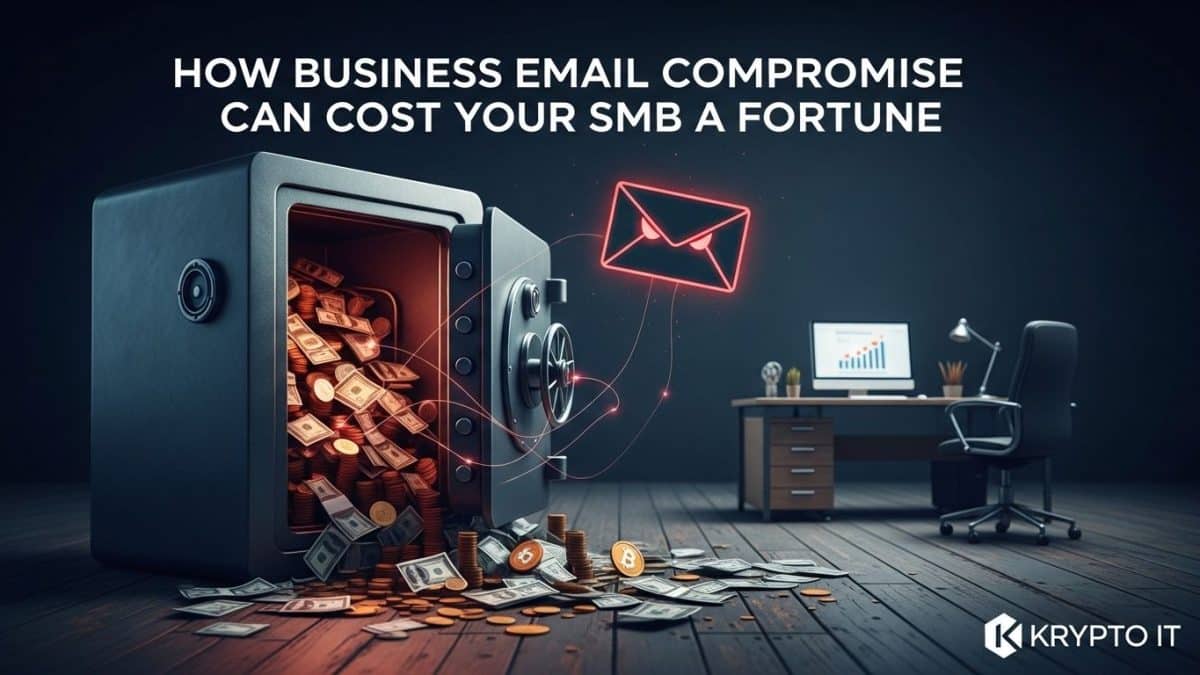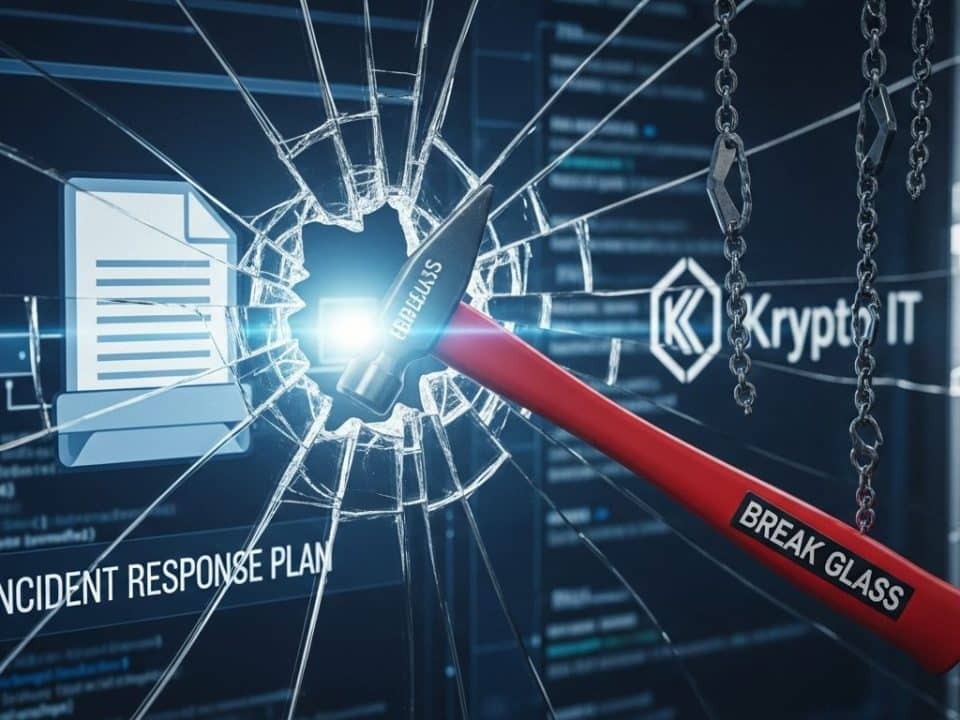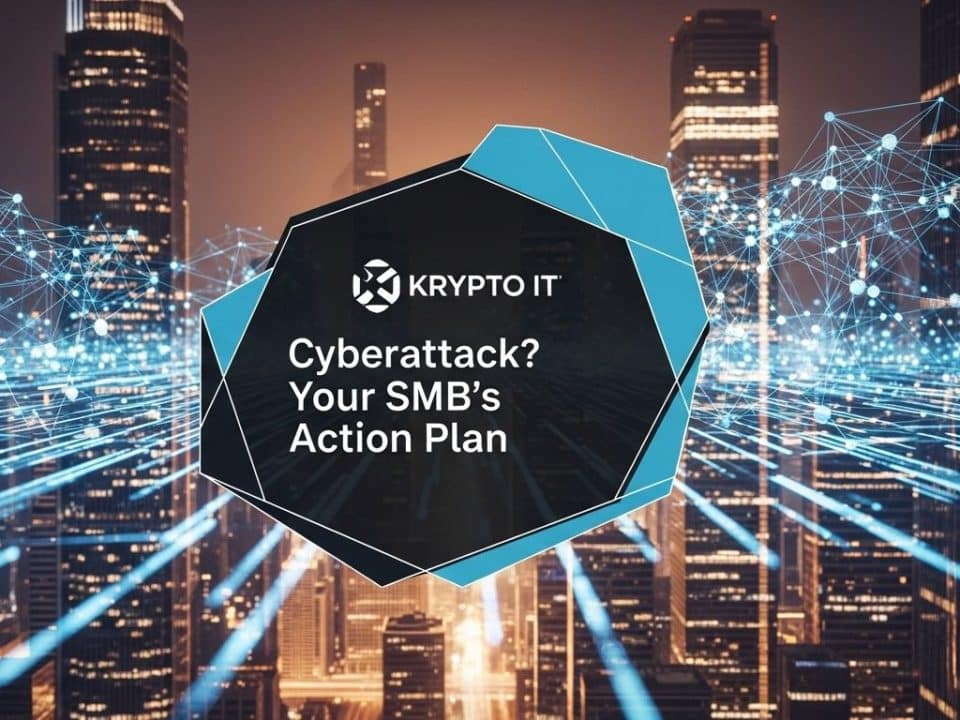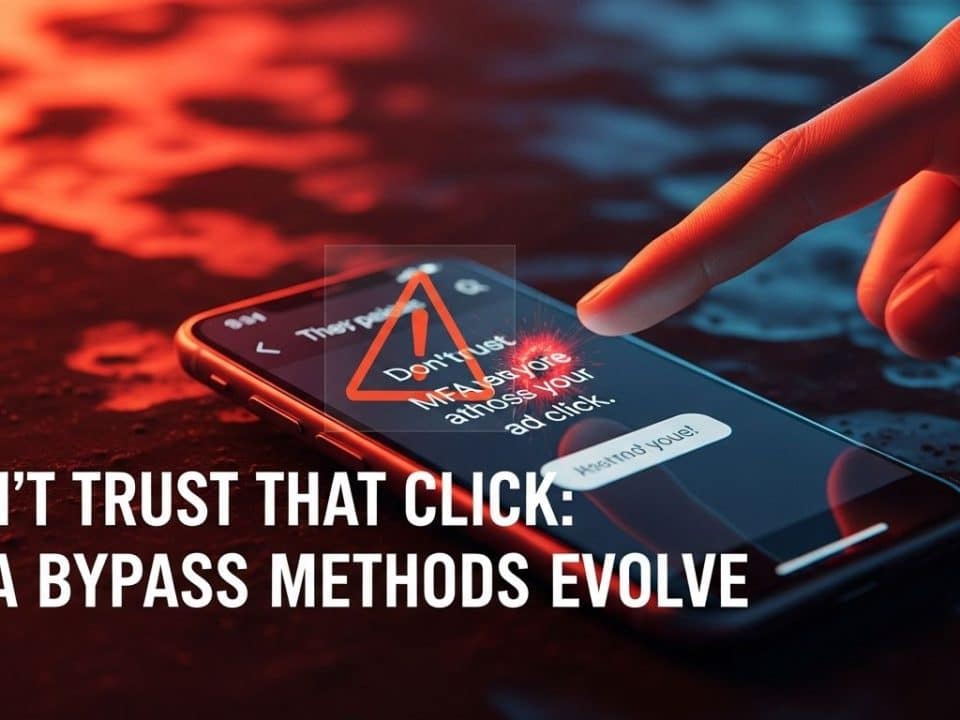
The “Unphishable” Lie: Bypass Attacks Persist
July 30, 2025
Stop Network Noise: Spot Suspicious Activity
August 2, 2025How Business Email Compromise Can Cost Your SMB a Fortune
In the complex world of cybercrime, some of the most financially devastating attacks aren’t the ones that make the loudest noise. They don’t involve flashy ransomware pop-ups or massive, public data leaks. Instead, they are quiet, deceptive, and incredibly effective. This is the world of Business Email Compromise (BEC), a sophisticated scam that preys on trust and established business processes. According to recent FBI reports, BEC scams continue to be one of the most financially damaging forms of cybercrime, costing businesses billions globally every year.
For Small and Medium-sized Businesses (SMBs) in Houston, the “invoice scam” is a particularly dangerous form of BEC. It can appear harmless and routine, yet a single successful attack can drain your bank accounts, damage your reputation, and threaten your business’s very existence.
What is Business Email Compromise (BEC)?
BEC is a type of social engineering fraud that involves a cybercriminal gaining unauthorized access to a business email account or, more commonly, spoofing a legitimate email address. The goal is to deceive employees into transferring funds or sensitive information to the attacker. Unlike broad-based phishing campaigns, BEC is highly targeted and relies on extensive reconnaissance to make the scam as convincing as possible.
The “invoice scam” is the most common form of BEC, and it’s a masterclass in deception.
How the Sneaky ‘Invoice’ Scam Works
The attack is not about a technical exploit; it’s about a human exploit. Here’s the typical playbook attackers follow:
- Reconnaissance: The attacker first spends time researching your business and its relationships. They identify key personnel (e.g., your CEO, CFO, or accounts payable manager) and your regular vendors or suppliers. They may monitor email traffic to understand your payment processes and typical communication styles.
- Impersonation: The attacker then crafts a fraudulent email that looks like it’s from a legitimate source. There are two primary methods:
- Spoofing the Vendor: The attacker sends an email that appears to be from one of your trusted vendors. The email address might be a “lookalike” domain (e.g., vendor.co instead of vendor.com) or a spoofed sender display name.
- Compromising a Vendor’s Email: In a more advanced attack, the attacker might gain access to the vendor’s actual email account through a previous phishing attack. They then send a legitimate-looking invoice or a change of banking details directly from the vendor’s compromised email.
- The Deceptive Invoice: The email contains a fraudulent invoice or a message stating that the vendor’s banking details have changed. The request often has a sense of urgency, citing a “new banking partner,” an “overdue payment,” or a “special discount for immediate payment.” The attacker is hoping to bypass your standard verification processes with a sense of urgency.
- The Transfer: The unsuspecting employee, trusting the sender’s identity and the urgency of the message, processes the payment to the fraudulent bank account provided by the attacker.
- Gone in Seconds: Once the wire transfer is complete, the money is typically transferred out of the attacker’s account within minutes, making it incredibly difficult to recover.
The Devastating Impact on Houston SMBs
While global corporations like Google and Facebook have famously fallen victim to multi-million-dollar BEC scams, smaller businesses are disproportionately targeted. With fewer resources and often less robust security protocols, they are seen as easier prey.
- Financial Ruin: The average BEC wire transfer request can be tens of thousands of dollars, and a single successful attack can be enough to financially cripple an SMB. The losses are often unrecoverable.
- Operational Disruption: The fallout from a BEC scam can lead to extended operational disruptions, as you work with banks, law enforcement, and cybersecurity experts to investigate the incident.
- Reputational Damage: Losing funds to a scam can shake the confidence of your customers and partners, damaging your brand’s reputation and potentially leading to a loss of business.
- Compliance and Legal Issues: Depending on the nature of the data involved (e.g., if a compromised email account contained customer information), a BEC scam could lead to compliance violations and legal liability.
How to Stop the ‘Invoice’ Scam: A Proactive Defense
Preventing BEC scams requires a layered approach that combines technical safeguards with a strong focus on human processes and employee training.
- Implement a “Verify, Don’t Trust” Policy: This is your most powerful defense. Never make a wire transfer or change payment instructions based solely on an email request.
- Action: Create a strict policy that requires out-of-band verification. If you receive an email requesting a wire transfer or a change to payment details, call the vendor back at a known, official phone number (not one provided in the email).
- Dual Approval: For any financial transaction above a certain threshold, require at least two employees to independently approve the request.
- Continuous Security Awareness Training:
- Focus on BEC: Train your employees, especially those in accounting, finance, and administration, on the specific tactics of BEC scams.
- Simulate Attacks: Use simulated BEC attacks to test your employees’ vigilance and provide real-time feedback.
- Highlight Red Flags: Teach them to look for urgent or unusual language, subtle email address variations, and unexpected requests for bank detail changes.
- Strengthen Email Security:
- Enable Multi-Factor Authentication (MFA): Make MFA mandatory for all email accounts. A compromised email account is the gateway for many BEC attacks. MFA prevents attackers from logging in even if they have the password.
- Advanced Anti-Phishing: Deploy advanced email security solutions that use AI and machine learning to detect impersonation attempts, malicious links, and other signs of BEC.
- Implement DMARC, SPF, and DKIM: Use these email authentication protocols to prevent your own domain from being spoofed by attackers.
- Secure Vendor Management:
- Centralize Data: Maintain a secure, centralized database of all vendor contact and payment information.
- Verify Changes: When a vendor requests a change to their banking details, always verify the request through a trusted channel, like a phone call to a known contact at the company.
The “invoice scam” is not just a digital threat; it’s a psychological one. It leverages trust to steal a fortune. For Houston SMBs, recognizing the danger and implementing a “verify, don’t trust” culture is the most effective way to safeguard your finances and your future. Krypto IT specializes in helping businesses build these critical defenses against the relentless threat of BEC.
Don’t let a single email compromise your business.
Contact us today to schedule a free consultation and ensure your business is protected from BEC scams.




